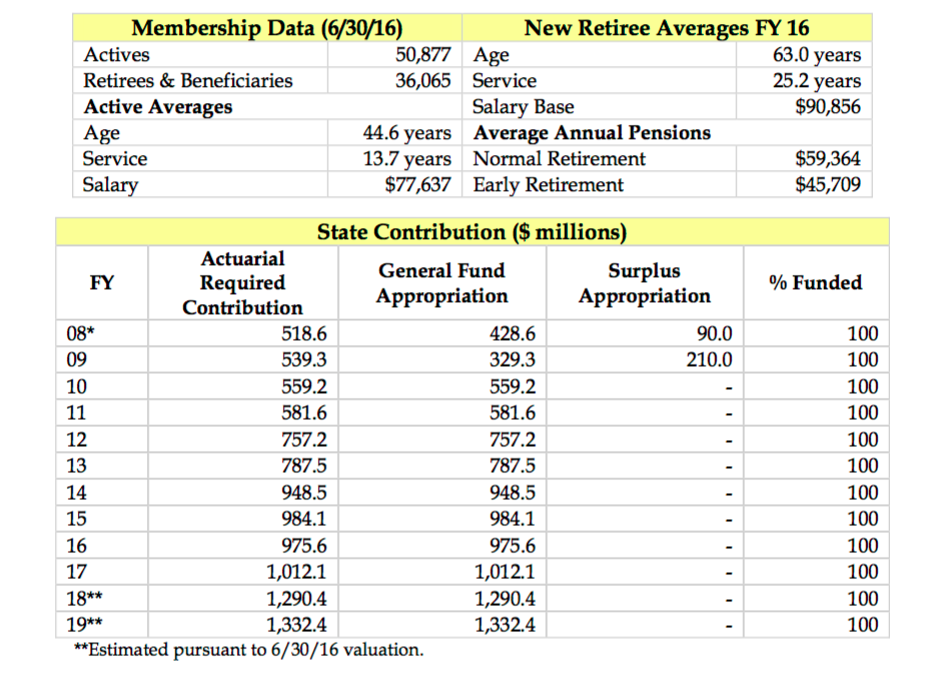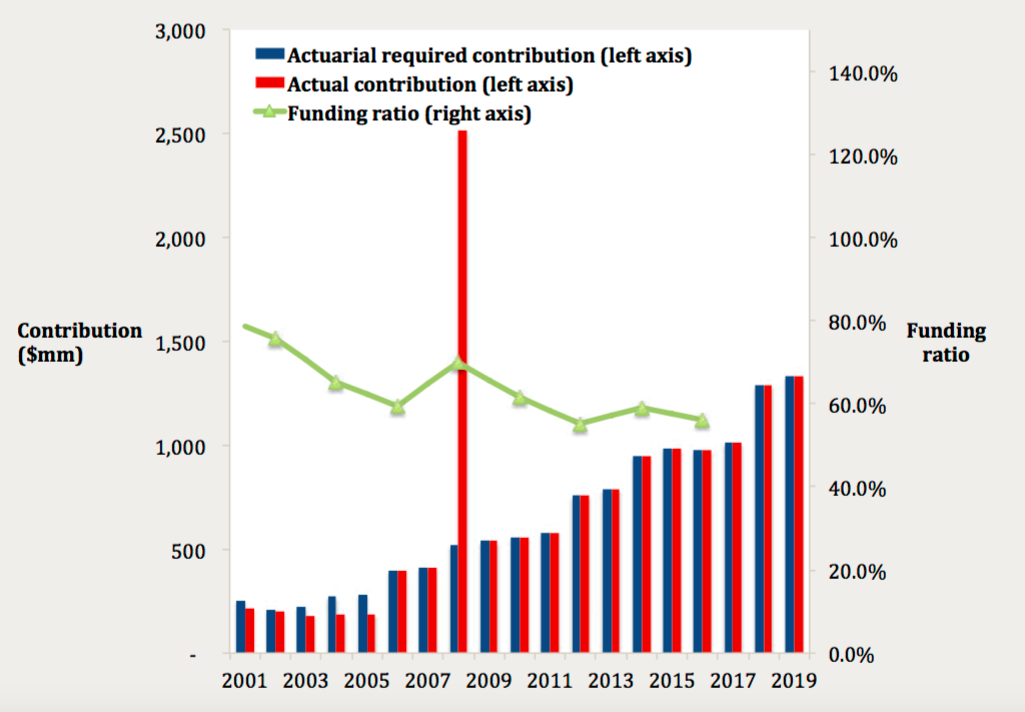Lawmakers may increase the teacher pension contribution rate from 6 percent of a teacher’s pay to 7 percent as part of a new compromise budget package.
Although proposal has drawn strong criticism from the state’s teachers’ unions, Connecticut teachers would still be paying less than the national average of 8 percent and far less than the 11 percent contribution required in Massachusetts.
The increased contribution is expected to raise $38 million per year. It is hoped the increase will help offset the sky-rocketing cost of teacher pension liabilities, which threaten to grow six-fold between now and 2032.
Even with the proposed contribution change, Connecticut will have to make drastic cuts and tax increases to handle the projected increase in pension costs, or teachers may be forced to pay even more in pension contributions and get less in retirement.
Connecticut teachers do not pay into, nor do they receive, social security, but they receive some of the highest pensions in the country. The average Connecticut teacher pension is nearly $60,000, according to the Office of Fiscal Analysis.

The average social security recipient receives a little more than $32,000 per year.
Teachers’ unions are pushing back against the 1 percent increase labelling it a “teacher tax,” because the extra teacher contributions would reportedly go into the General Fund.
Sources, however, indicate that the original plan to have the extra 1 percent go into the General Fund was a drafting mistake and that the full 7 percent contribution will go directly to the teachers’ pension fund when the final budget language is released.
The state currently pays 23 percent of a teacher’s salary into the pension fund, but those payments are spent entirely on the unfunded liabilities. Of the $1.2 billion Connecticut paid for teacher pensions in 2016, more than $1 billion was to pay for the $10 billion in unfunded liabilities.
The state is expected to pay $1.3 billion in 2018.
The unfunded liabilities grew in the past partially because the state did not pay its full portion into the fund, and also because the way the state values the pensions understates their full cost.
Those liabilities threaten the stability of the teachers’ pension fund and state budgets in the future.
Other states, such as Michigan, which were facing similar difficulties moved new teachers onto 401(k) style defined contribution plans. Michigan faced a $29 billion shortfall and state pension contributions amounted to 36 percent of payroll.
According to the Mackinac Center for Public Policy in Michigan, the change would “stop digging the hole deeper.”
A 2017 study on whether or not Connecticut’s teacher pension system could be stabilized suggested moving new hires onto a defined contribution plan and allowing them to collect social security.

Those changes would allow new teachers to save more of what they earn and take their savings with them if they change jobs. Closing off the pension system to new hires would prevent the state from incurring more liabilities in the future.
“Although DC plans shift investment risk to each employee, it would give teachers portable accounts that would, by definition, be fully funded as the match is paid with each paycheck,” wrote study author and actuary, Eric Halpern. “A teacher would not be left to wonder whether Connecticut, which has never fully funded the CTRS in the system’s 100 years, is actually capable of making good on its commitments.”
Nearly half of all teachers leave the profession before becoming vested in the pension plan and Connecticut teachers have to work 25 years before they will see a return on their investment, according to a study by EdChoice.
Teachers’ unions have opposed the idea of changing the state’s retirement benefits, but absent any significant changes, the pension costs will continue to rise and may force future tax increases, pension contribution increases and benefit reductions to make up the difference.
Gov. Dannel Malloy originally proposed forcing municipalities to pay part of the cost of teacher pensions, an idea that was largely rejected as it would lead to property tax increases. Under latest iteration of the plan, municipalities would have to contribute $200 million annually to the pension system.
The governor also proposed refinancing the unfunded pension liabilities to stretch them out over a longer period of time to avoid the massive spike in costs. This would essentially shift the cost burden onto future generations and cost billions more in interest payments, similar to what the governor did with the state employee pension system.
But that plan could be hindered by a $2 billion bond taken out by the state in 2008 to help fund the teacher pension system. The bond to be paid over 25 years dictates that Connecticut cannot pay less the actuarially required contribution to the pension system.
According to a press release by State Treasurer Denise L. Nappier, “We must be sure to adhere to the bond covenant adopted in 2008 in conjunction with the sale of pension obligation bonds to boost the resources of the Teachers’ Retirement Fund. Any language allowing the State’s actuarially required contributions to be extended into the future could restrict our ability to carry out contractual obligations and result in a costly legal breach.”

